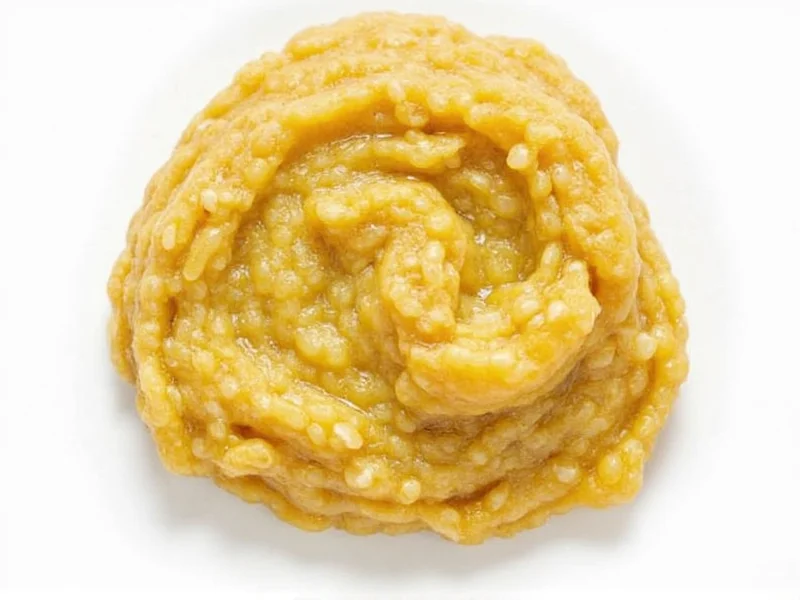When you're in the middle of preparing an Asian-inspired dish and realize you've run out of sesame paste, knowing reliable substitutes can save your recipe. Sesame paste, a staple in Chinese and Middle Eastern cuisines, provides a rich, nutty flavor and creamy texture that's challenging to replicate exactly. However, several pantry staples can effectively stand in depending on your specific culinary needs and dietary restrictions.
Understanding Sesame Paste and Substitution Needs
Sesame paste (also called jiang you in Chinese cooking) is made from toasted sesame seeds ground into a thick paste. It differs from tahini, which uses raw sesame seeds, resulting in a more intense, roasted flavor profile. When seeking a sesame paste alternative, consider whether you need to match the flavor, texture, or both for your specific recipe.
Common reasons for needing substitutes include dietary restrictions (particularly sesame allergies), ingredient availability issues, or simply wanting to experiment with different flavor profiles while maintaining similar texture properties in your dishes.
Top 5 Sesame Paste Substitutes Ranked by Effectiveness
| Substitute | Flavor Match | Texture Match | Best For | Conversion Ratio |
|---|---|---|---|---|
| Tahini | 8/10 | 9/10 | Most Asian dishes, sauces, dressings | 1:1 |
| Peanut Butter | 6/10 | 8/10 | Noodle dishes, marinades, dipping sauces | 3/4 amount |
| Almond Butter | 7/10 | 8/10 | Dressings, sauces where nuttiness complements dish | 1:1 |
| Sunflower Seed Butter | 5/10 | 7/10 | Allergy-friendly applications, lighter sauces | 1:1 + pinch of salt |
| Soy Butter + Sesame Oil | 7/10 | 8/10 | When sesame flavor is essential but paste unavailable | 3/4 soy butter + 1 tsp sesame oil per tbsp |
Detailed Substitute Analysis
Tahini: The Closest Sesame Paste Alternative
Tahini makes the most effective substitute for sesame paste in most recipes because it shares the same base ingredient (sesame seeds), though tahini uses raw seeds while traditional Chinese sesame paste uses toasted seeds. This difference means tahini has a milder flavor. When using tahini as a sesame paste alternative, consider adding a small amount of toasted sesame oil (about 1/2 teaspoon per tablespoon of tahini) to enhance the roasted flavor profile.
For authentic Chinese dishes like hot pot dipping sauce or dan dan noodles, tahini works exceptionally well as a 1:1 replacement. This sesame paste substitute maintains the creamy texture while delivering similar nutritional benefits. Professional chefs often recommend this substitution when creating allergy-friendly versions of sesame-based dishes.
Peanut Butter: The Pantry Staple Option
When considering how to replace sesame paste in cooking, peanut butter serves as a reliable alternative, especially in Westernized Asian recipes. Its thicker consistency and stronger flavor mean you should use about 25% less than the recipe calls for. Natural, unsweetened peanut butter works best as a sesame paste replacement to avoid altering your dish's flavor balance.
This substitute shines in cold noodle dishes, satay sauces, and certain marinades where the peanut flavor complements rather than competes with other ingredients. For those seeking a sesame paste substitute for ramen broth enhancement, a small amount of peanut butter can add the desired richness without overwhelming the delicate broth flavors.
Nut and Seed Butters: Allergy-Friendly Alternatives
For individuals with sesame allergies needing an allergy-friendly sesame paste replacement, nut and seed butters provide viable options. Almond butter delivers a similar creamy texture with a more neutral flavor that works well in dressings and sauces. Sunflower seed butter offers a nut-free alternative that maintains comparable consistency, though it lacks the distinctive nuttiness.
When exploring sesame paste vs tahini substitution for allergy purposes, remember that tahini still contains sesame and isn't suitable. Instead, try creating a custom blend using 3 parts soy butter with 1 teaspoon of sesame oil per tablespoon to approximate the flavor while controlling allergen exposure. This approach works particularly well for sesame paste replacement in Chinese cuisine where the distinctive flavor matters most.
Recipe-Specific Substitution Guidance
Not all substitutes work equally well across different applications. Understanding which alternative performs best for specific dishes ensures your culinary creations maintain their intended character:
- For cold sesame noodles: Tahini with added sesame oil provides the closest match to traditional sesame paste
- For ramen broth enhancement: A small amount of peanut butter (1/2 tablespoon per serving) adds richness without overpowering
- For dipping sauces: Almond butter creates an excellent sesame paste alternative with similar viscosity
- For vegan recipes: Sunflower seed butter serves as the best nut-free sesame paste substitute
- For baking applications: A blend of soy butter and neutral oil works as the most reliable sesame paste replacement
Avoiding Common Substitution Mistakes
When experimenting with sesame paste alternatives, avoid these frequent errors that can compromise your dish:
- Using sweetened nut butters in savory applications
- Substituting equal amounts of thicker nut butters without adjusting liquid content
- Adding too much sesame oil when using tahini, which can make sauces bitter
- Using roasted nut oils instead of seed oils, which create flavor conflicts
- Not considering how the substitute affects the dish's final color
For optimal results when learning how to replace sesame paste in cooking, always start with slightly less substitute than recommended, then adjust to taste. The goal isn't perfect replication but achieving a harmonious flavor profile that works within your specific recipe constraints.
Creating Homemade Sesame Paste Alternatives
When commercial options don't meet your needs, consider making your own sesame paste substitute. For a quick homemade version, combine 1/4 cup toasted sesame seeds with 2 tablespoons neutral oil (like grapeseed) and process until smooth. This DIY approach delivers the closest flavor match to traditional sesame paste while allowing you to control ingredient quality.
For those exploring sesame paste substitute for tahini in Middle Eastern recipes, try roasting raw tahini in a dry pan over low heat for 3-5 minutes to deepen its flavor profile. This simple technique transforms standard tahini into a more authentic sesame paste alternative without additional ingredients.











 浙公网安备
33010002000092号
浙公网安备
33010002000092号 浙B2-20120091-4
浙B2-20120091-4